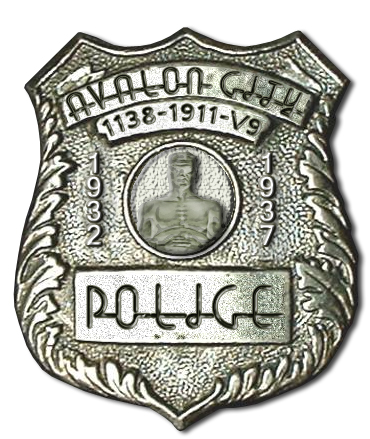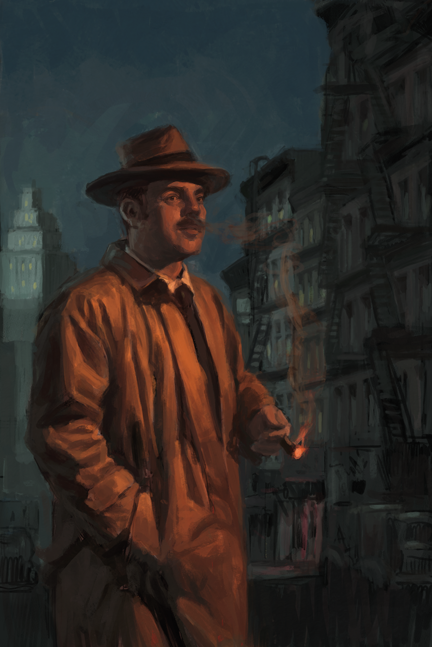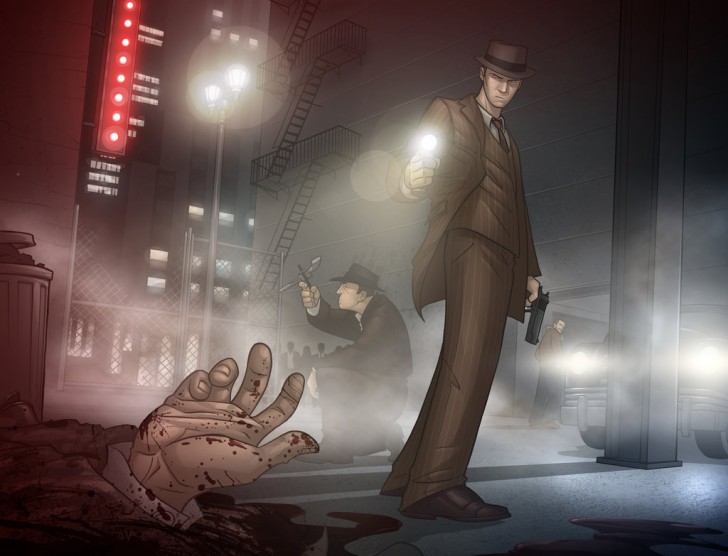Law Enforcement

Law Enforcement includes any professionally trained representative of the law engaged in protecting and upholding the federal, state, or local law. This might include Police Patrolmen, Detectives, Air Patrolmen, FBI Agents (G-Men), Forensic Scientists, Attorneys, Riot Squads, and Police Commanders, or any others engaged by the public trust to protect their interests.
Members of Law Enforcement typically have strong social skills. Most are expected to be able to conduct investigations including interviews with suspects and witnesses. Law enforcement officers are also expected to be able to have a working knowledge of handguns and moderate skill in their use. Many Law Enforcement officers also use shotguns, sub-machine guns, or rifles in addition to their side arms. Law Enforcement officers typically have high Perception and Social attributes.
Responsibilities of a law enforcement officer are varied, and may differ greatly from within one political context to another. Typical duties relate to keeping the peace, law enforcement, protection of people and property, and the investigation of crimes.

Police Officers are expected to respond to a variety of situations that may arise while they are on duty. Rules and guidelines dictate how an officer should behave within the community, and in many contexts restrictions are placed on what the uniformed officer wears. In some jurisdictions, rules and procedures dictate that a police officer is obligated to intervene in a criminal incident, even if they are offduty. Police officers retain their lawful powers, while off duty.
Modern Law Enforcement includes a strong street presence, an Air Patrol squadron utilizing lighter than air, as well as standard fixed wing craft, including support staff to keep the Air Patrol flying.
The Federal Bureau of Investigation (FBI) is a governmental agency belonging to the United States Department of Justice that serves as both a federal criminal investigative body and an internal intelligence agency (counterintelligence). Also, it is the government agency responsible for investigating crimes on Indian reservations in the United States under the Major Crimes Act. The branch has investigative jurisdiction over violations of more than 200 categories of federal crime.
The agency was established in 1908 as the Bureau of Investigation (BOI). Its name was changed to the Federal Bureau of Investigation (FBI) in 1935.
In 1935 the FBI created a new PK operation to experiment with the use of PK trained agents in the field for investigations, particularly in counter intelligence operations, PK trained agents are considered part of the Parapsychology category, and are found on page 10 though they are indeed a part of the FBI and are also considered law enforcement.
Law Enforcement gains +1 Crit, Success, Fumble, +3 damage and Crit Damage with Revolvers. +1 Success with lever action rifles and shotguns.
| Law Enforcement | |||||||||
| Class | Ath | Bak | Com | Inter | Inv | Cer | Trade | Tran | Specialization |
| Air Patrol | 5 | 5 | 10 | 5 | 10 | 3 | 5 | 15 | Lighter Than Air Craft or Heavier Than Air Craft. Specialization + 1. Handguns +5 damage. |
| F.B.I. Agent | 5 | 5 | 10 | 15 | 10 | 3 | 5 | 5 | Interrogation. Specialization + 1. Handguns +5 damage. |
| Forensic Scientist | 3 | 5 | 5 | 5 | 15 | 10 | 10 | 5 | Forensic Science and Interrogation. +2 Perception roll results. |
| Police Detective | 5 | 5 | 10 | 10 | 15 | 3 | 5 | 5 | Connections: Street. Handguns +5 damage. +1 Perception roll results. |
| Police Patrolman | 10 | 10 | 10 | 10 | 5 | 3 | 5 | 5 | Deceit Detection. Specialization + 1. Handguns +5 damage. |
| Riot Squad | 10 | 5 | 20 | 5 | 5 | 3 | 5 | 5 | Shotguns. Shotguns +8 damage. Handguns +5 damage. |
| Secret Service | 5 | 5 | 10 | 10 | 15 | 5 | 3 | 5 | Deceit Detection or Forgery Detection. Handguns +8 damage. |
| Sharpshooter | 15 | 5 | 10 | 5 | 10 | 3 | 5 | 5 | Rifles. Rifles +10 damage. |
| Treasury Agent | 10 | 5 | 10 | 10 | 10 | 3 | 5 | 5 | Tailing or Deceit Detection. Specialization + 2. |
| Undercover | 5 | 10 | 10 | 15 | 5 | 3 | 5 | 5 | Deceive. Specialization + 1. Handguns +8 damage. |
| U.S. Marshal | 5 | 5 | 10 | 10 | 10 | 5 | 3 | 10 | Tailing. Handguns +5 damage. Rifles +5 damage. |
